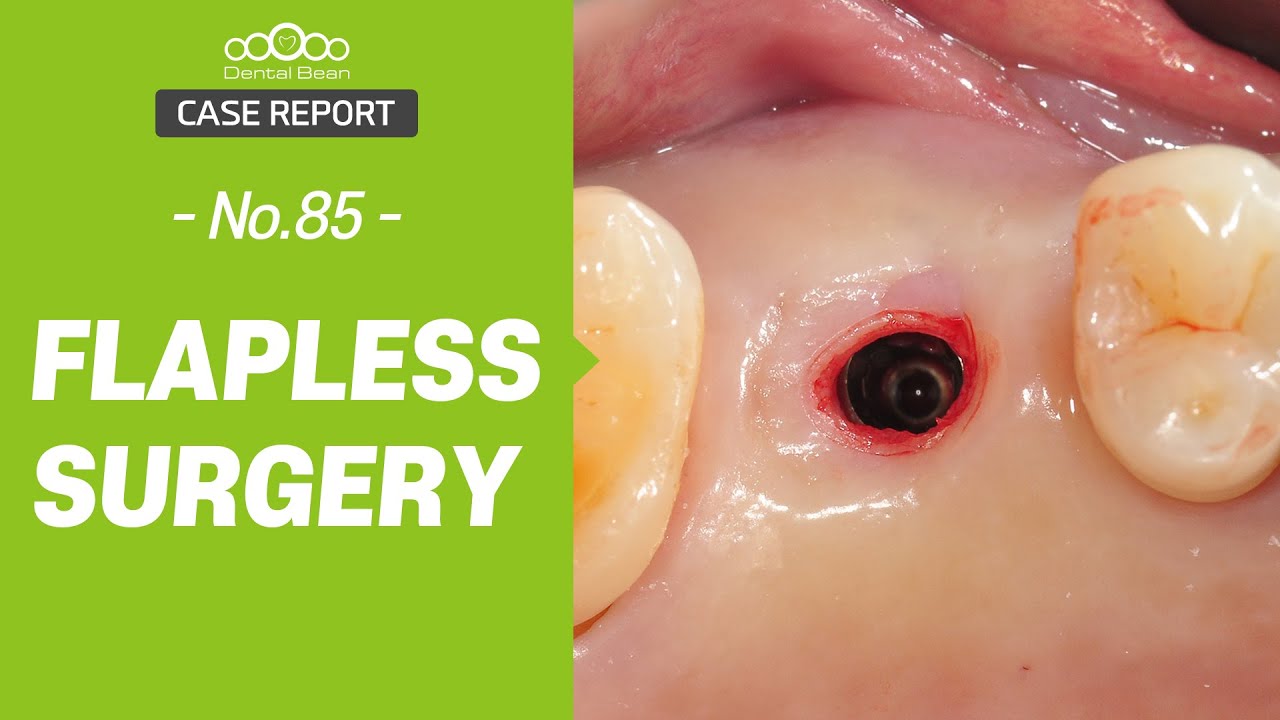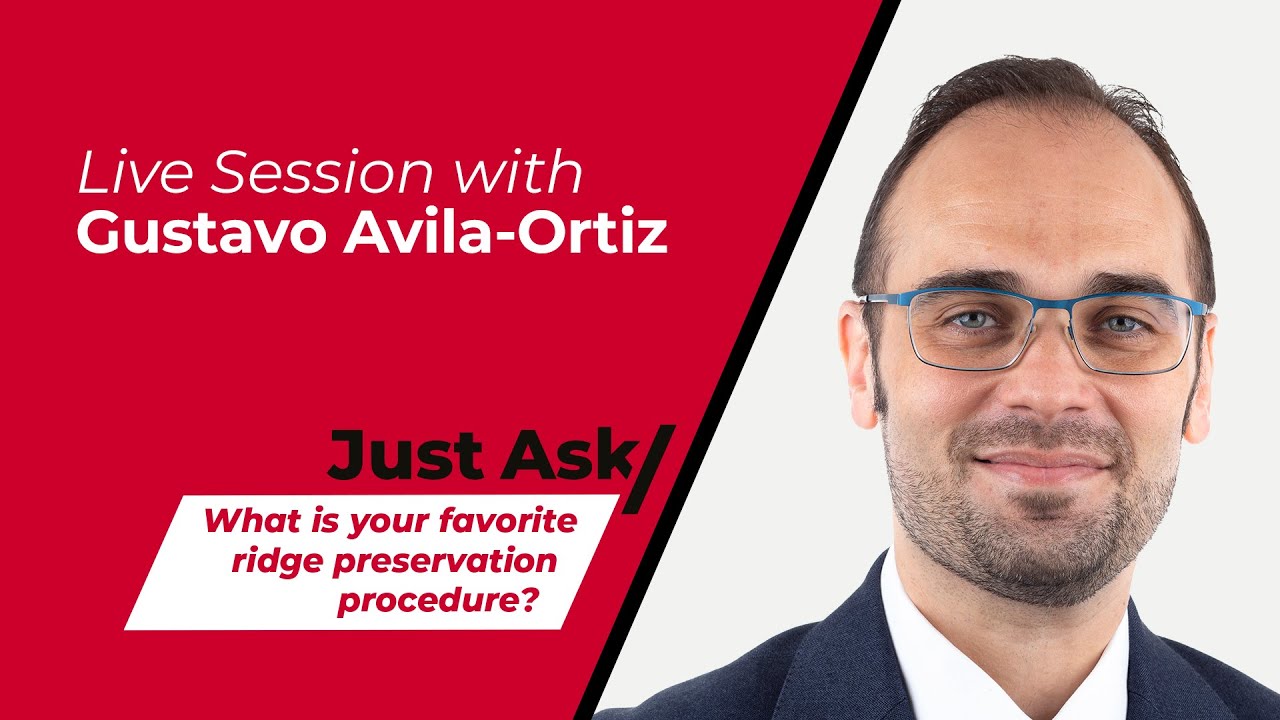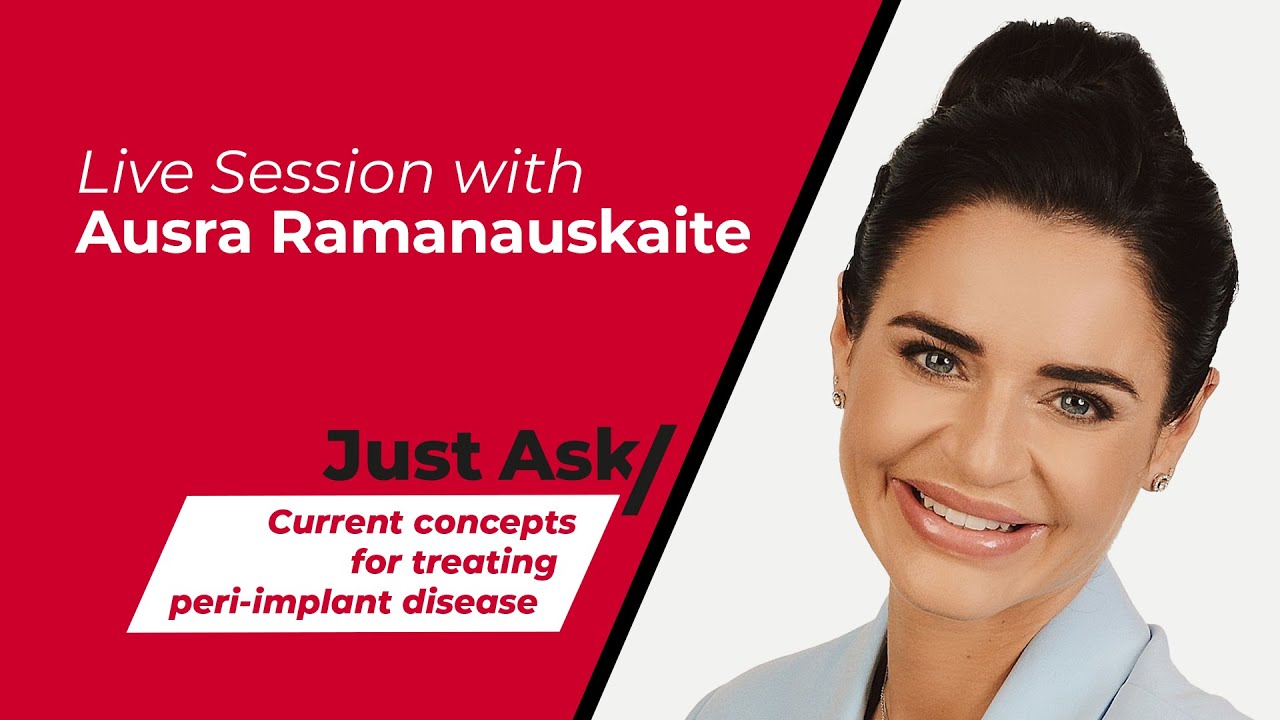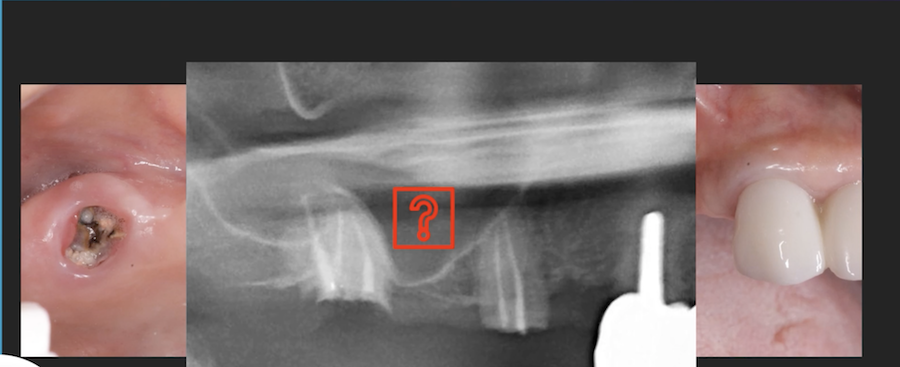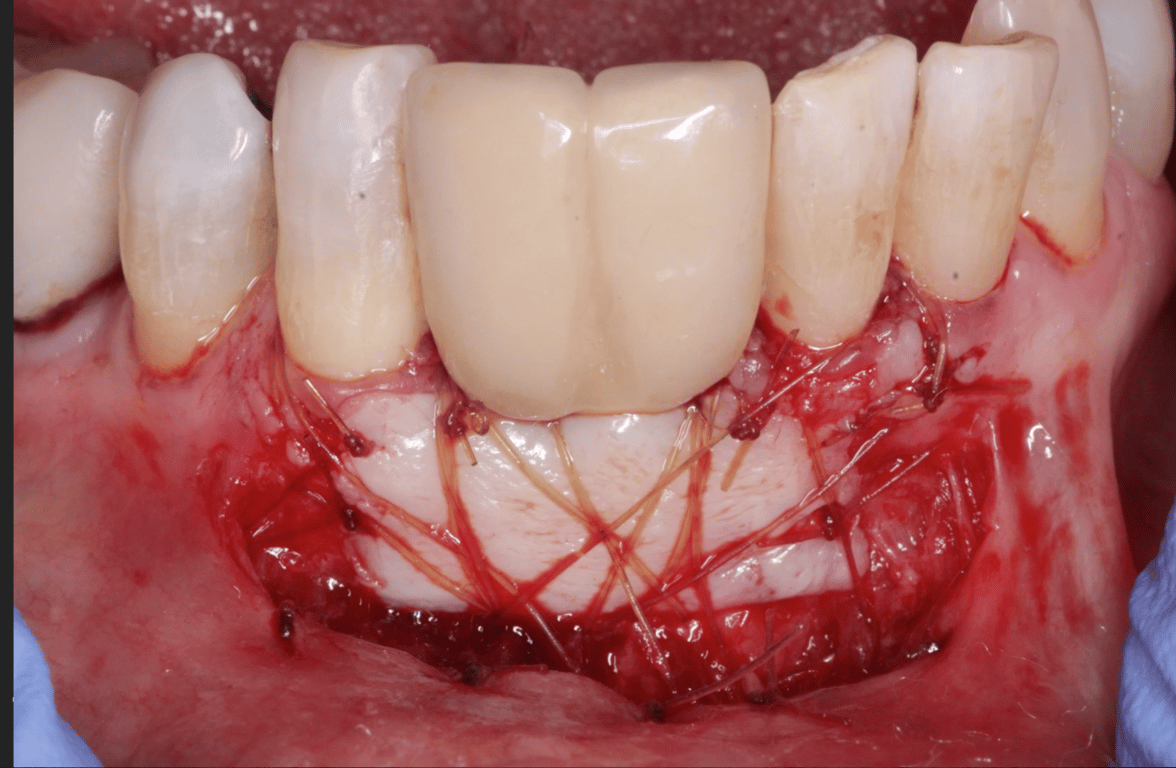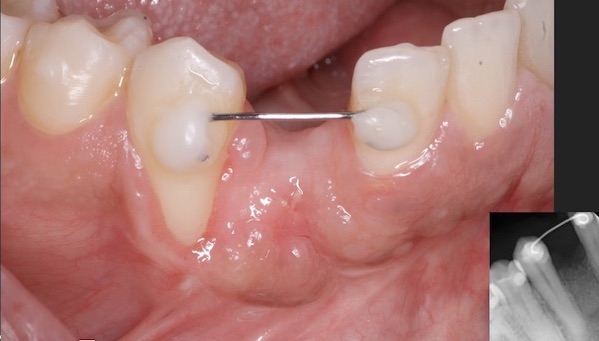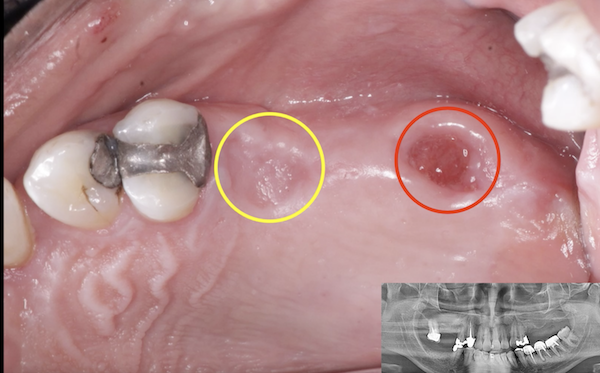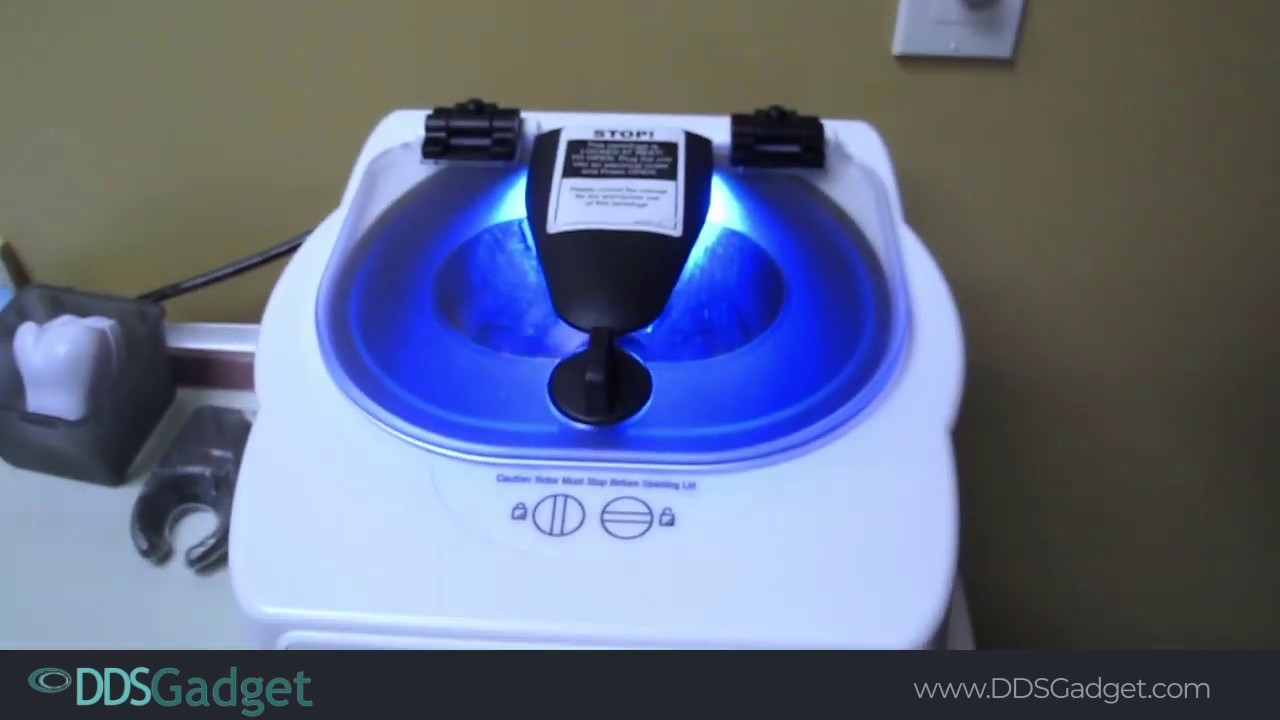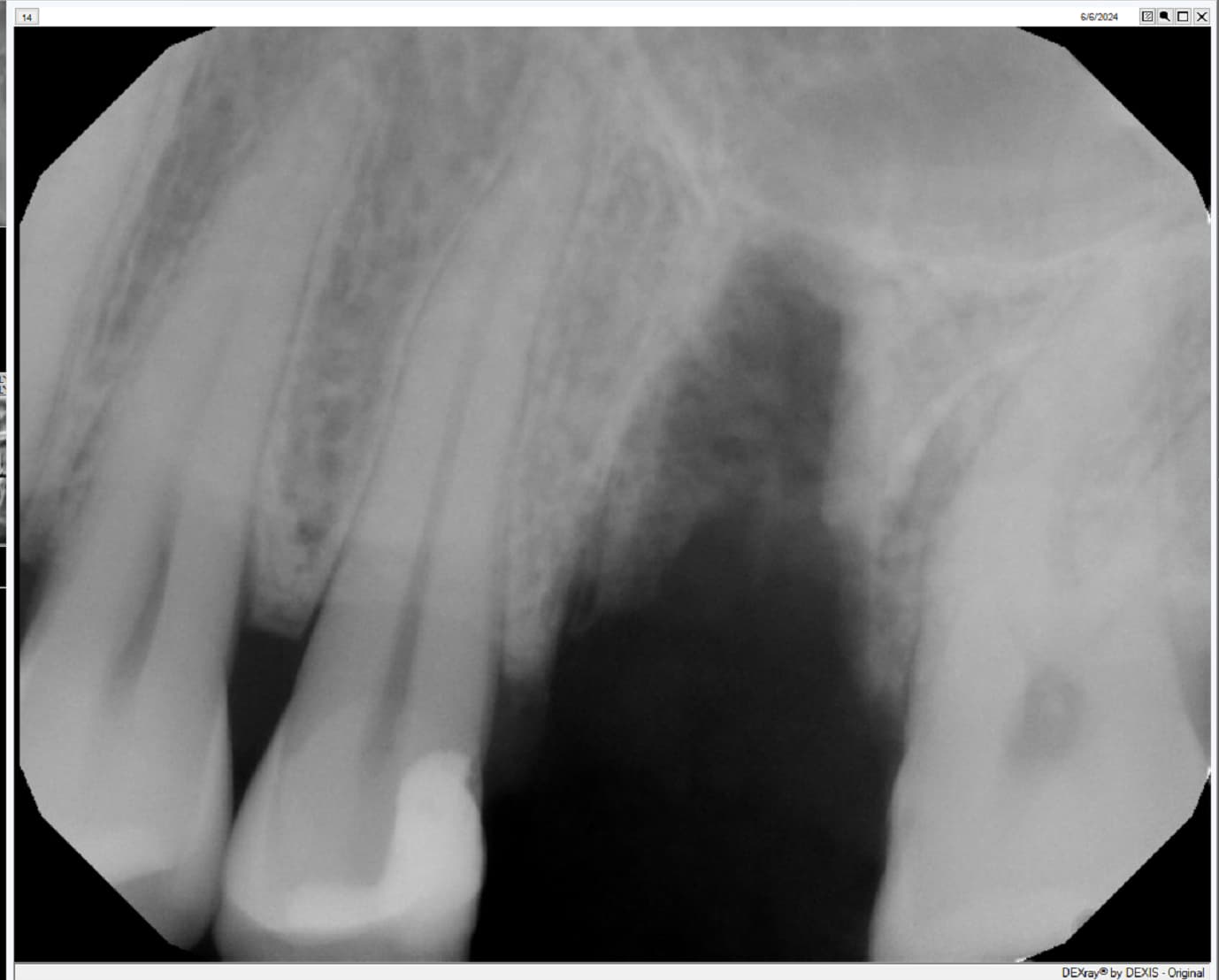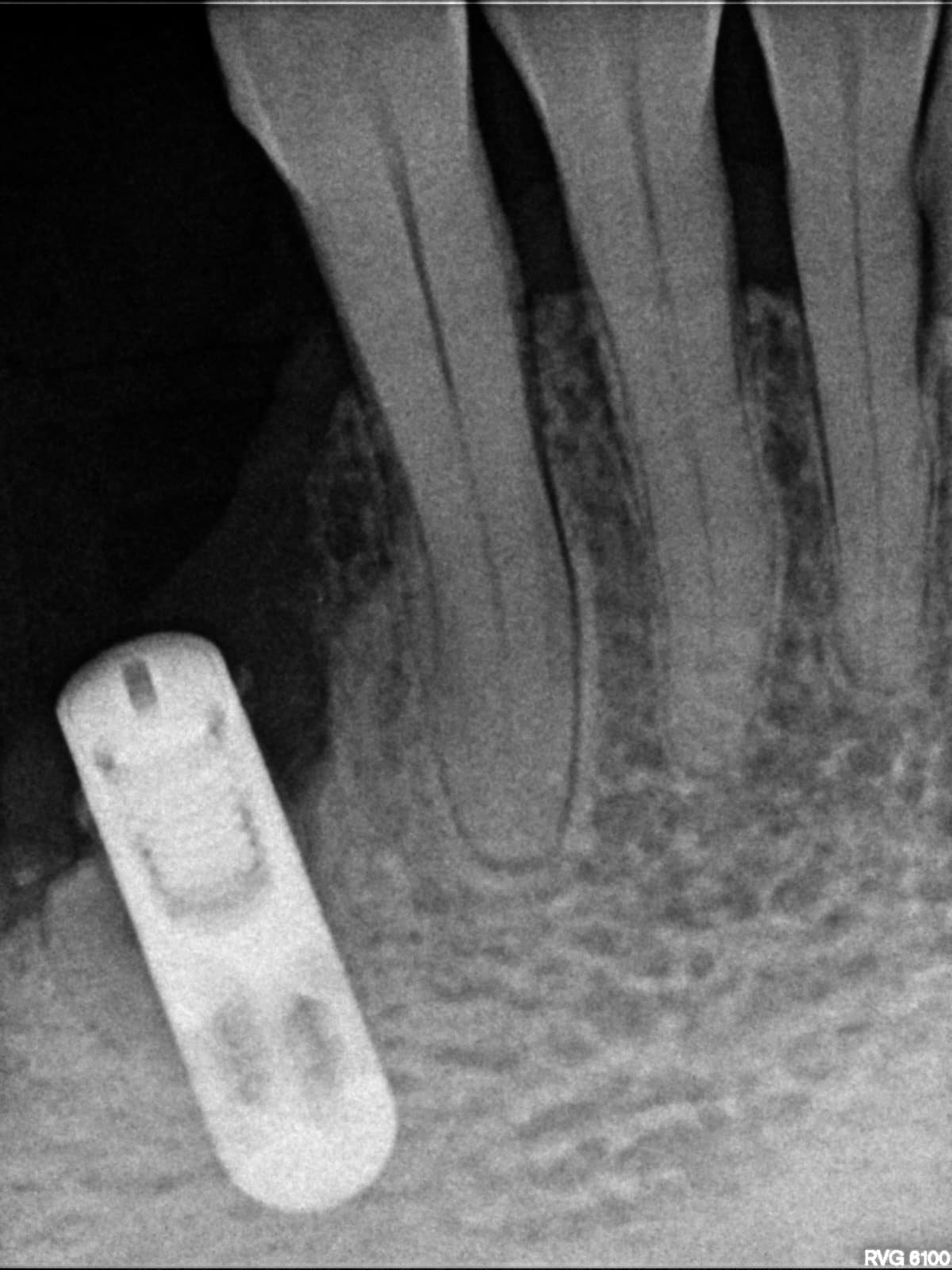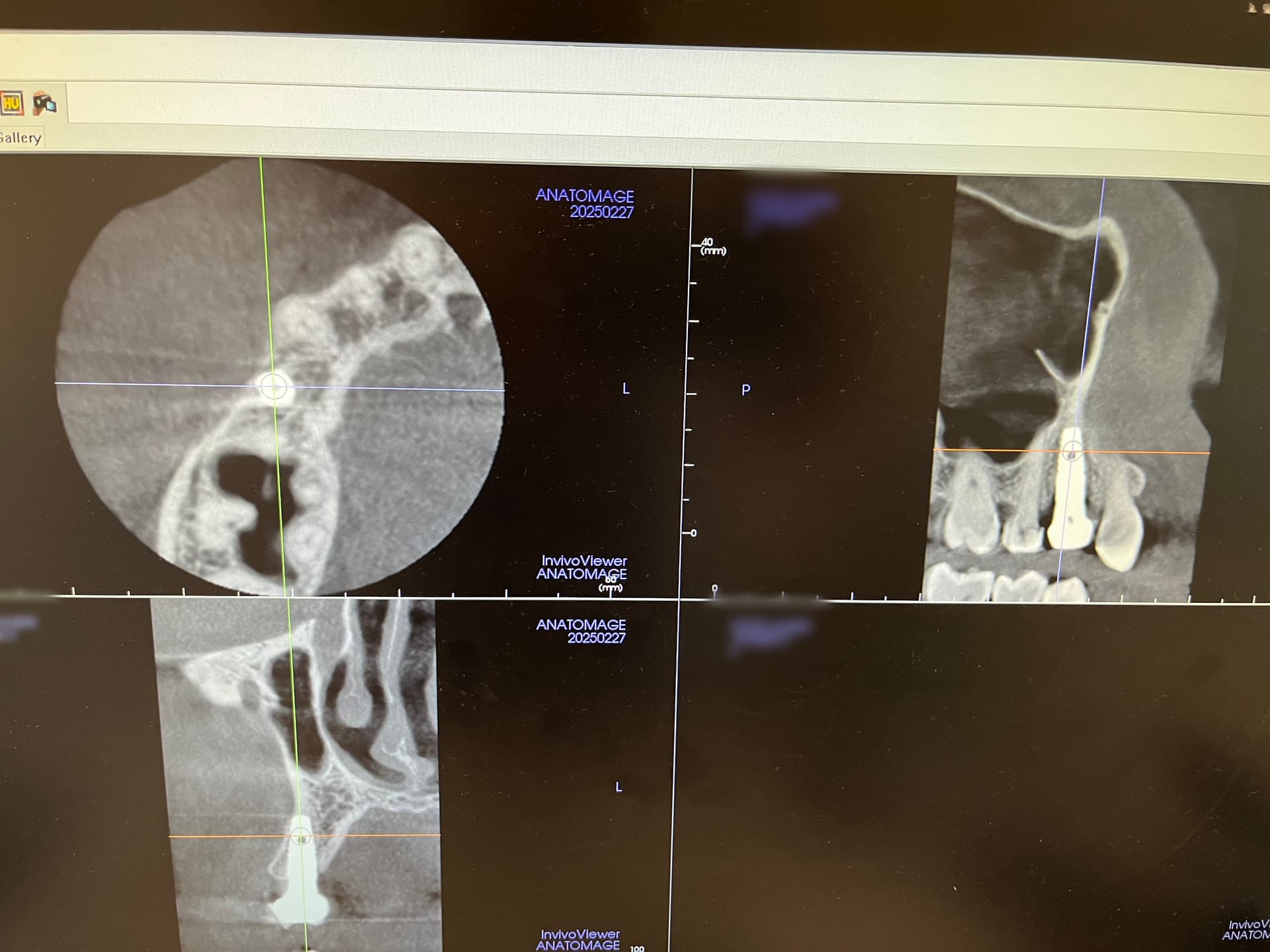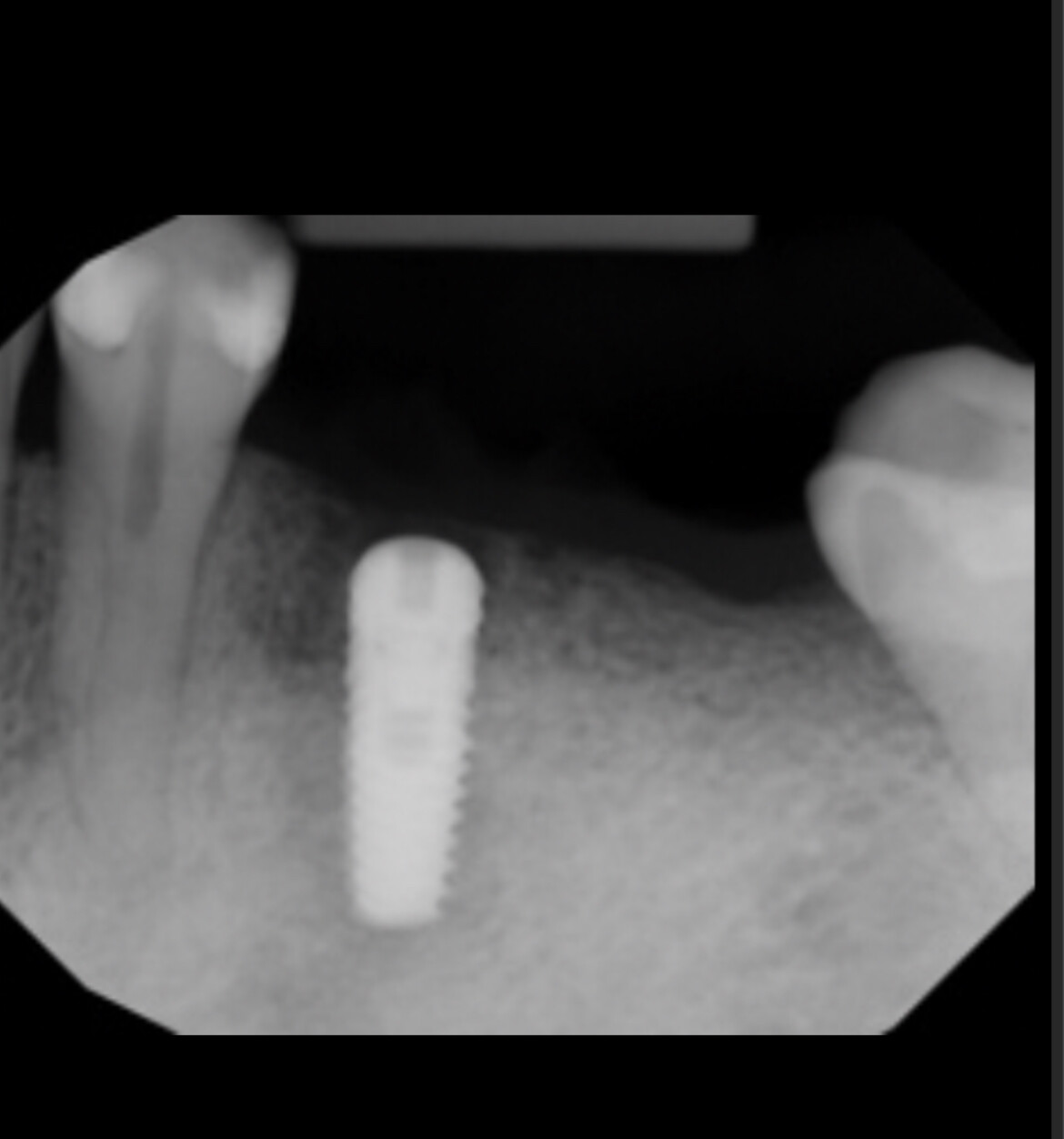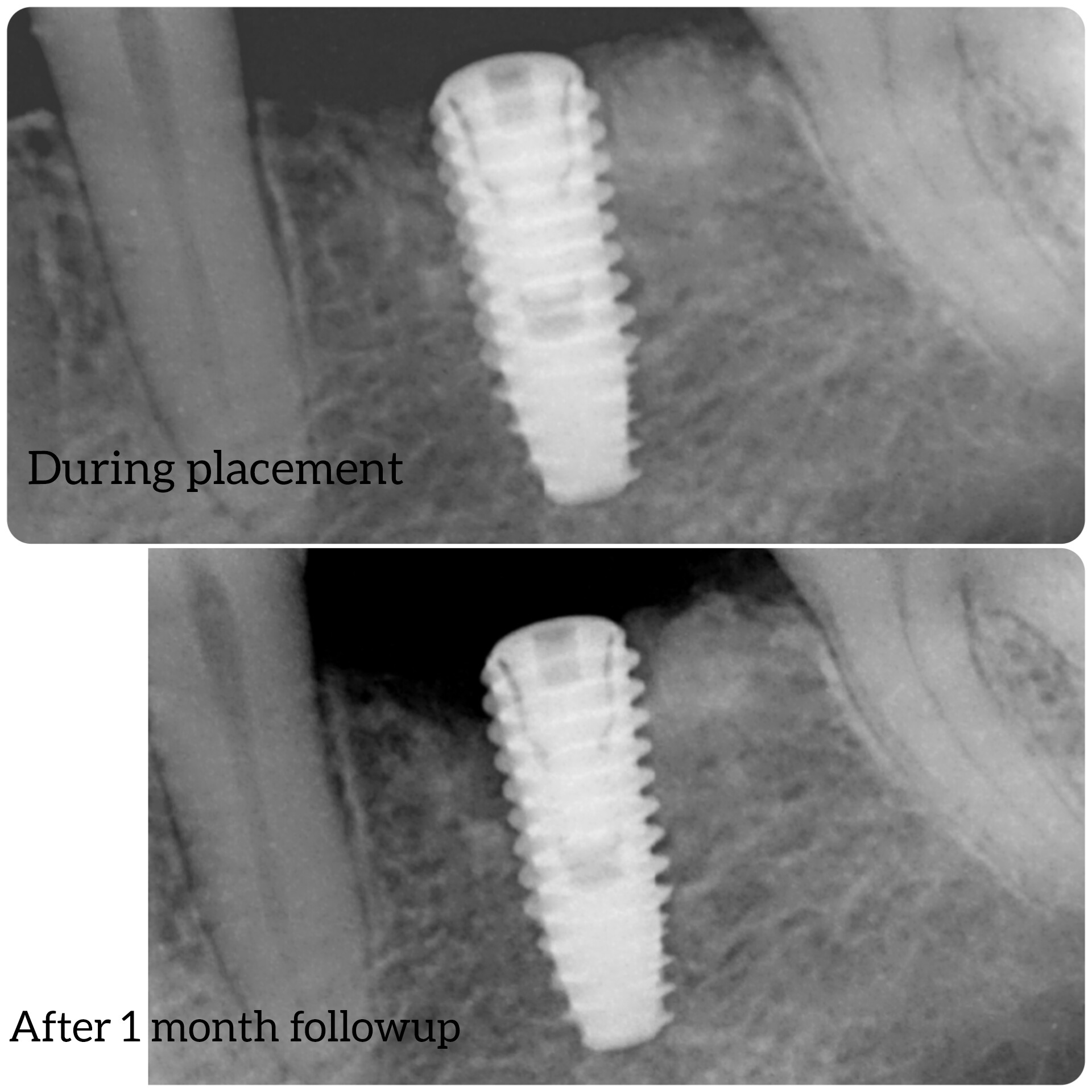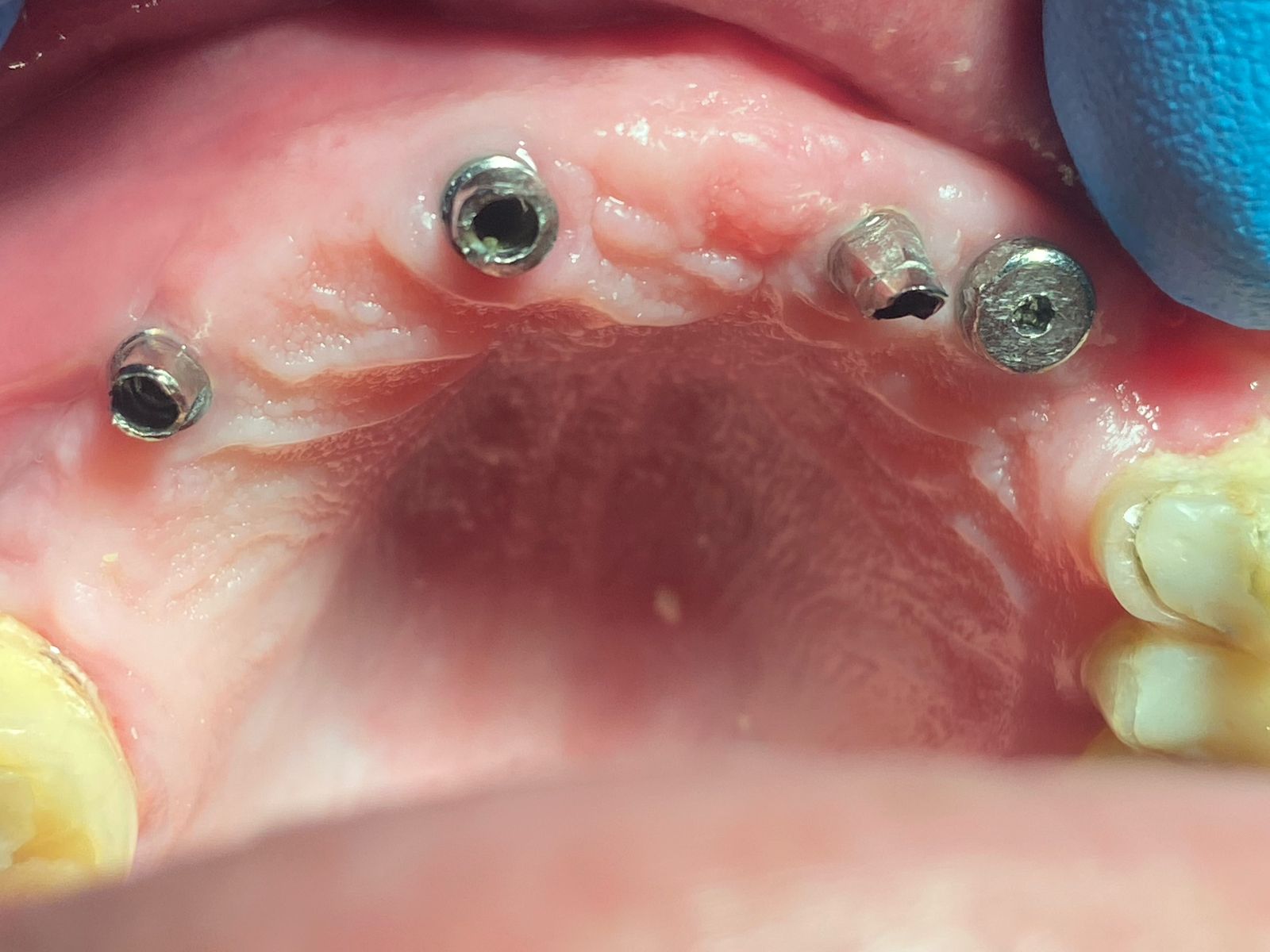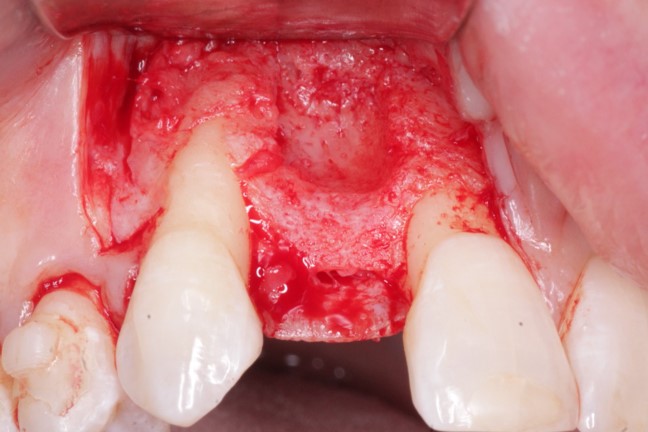Dental Implant Failure Treatment
I have a patient whose dental implants are completely stable but there is Peri-Implantitis. There has to be an eay way to treat this and prevent this type of situation in the future with other patients. The occlusion is fine and their home care is ok. Any thoughts?
39 Comments on Dental Implant Failure Treatment
New comments are currently closed for this post.
ralph mosery,dds
8/24/2004
1.how many implants are inflamed?
2.any swelling,pus
3.how's the bone look on a radiograph
how's the pts natural teeth in the same area?
if this is a localized problem around 1 implant with no pain no swelling just some inflamed tissue ,you could scale and keep pt on peridex and 2mo or 3 mo recall you must get homecare up to par. is pt a smoker.?
if there swelling and or pus then you have to get more aggresive even though the implant is firm there could be destrutive processes that will doom the implant if its not addressed proactively.
I've had cases where a localized 8mm pocket presented itself pus and swelling flapped it back cleaned it up with citric acid rinsed curreted tissues and closed put pt on clindamycin and peridex rinse with 2 mo recall case looks great its been 4 years
Steven Silberg DDS,MDT
8/24/2004
Do we really understand the etiology of this disease entity called Peri-Implantitis?? It would seem to form around HA coated implants due to what? Where do the microbes come from? Are they the same ones as in periodontitis? If so how does this disease spread w/o a pdl. Also I was under the impression that Titanium resisted microbe growth by forming some type of "peroxide gel" due to its "bioactive" surface. The plaque is there but not alot of inflamation. Or when there is inflamation I have not associated it with loss of attachment to bone. Calculous forms on root form implants but with a weak attachment. When removed the underlying tissue does not generally seem raw. And how often do you see sub-gingival calculous around dental implants?? The only times I have seen this is with ging.hyperplasia w/o bone loss. This disease entity has me baffled. I am not so sure that the microbes are the primary causitie agent and are secondary to something else that may have more of a mechanical etiology. The microbes are perhaps just secondary in arriving after the initial insult.. ???
Steven Silberg
8/24/2004
Is it actually a pocket or a peri-implant sulcus?They are not so easy to probe due to the shape of the hardware, right??
Basile Muntean, DDS
8/24/2004
2-3mm of bone loss with peri-implantitis around a solid, firm implant should be treated with agressive scaling with ultrasonic and handinstruments to remove any HA coating or to smooth out the roughened or plasma sprayed Ti surface down to the implant thread that is exposed. Sometimes you would need to do this after raising a flap for better visibility/access and then suturing back. Have the patient on Peridex for a couple of weeks.
The bacterial flora in peri-implantitis it's been shown to be the same as the one causing periodontitis; due to absence of periodontal attachment, implants are more affected than teeth. Also check occlusion - many times it is a primary cause of bone loss
Jeffrey Hoos DMD
8/25/2004
Suggestion are great and occlusion many times seems to be the key to bone loss. When I said to a patient....you have to brush....the response was "Doc, how do you think I lost my teeth?"
I am thinking that maybe it is a HOST RESISTANCE issue. These people lost there teeth for a reason, periodontal ligament or not it has to be some kind of bug.
steven silberg
8/25/2004
The truth is we really don't know for sure. I do think that bugs over load and the patients THRESHOLD FACTOR TO DISEASE PLAYS A ROLE BUT TO WHAT DEGREE IS EACH A FACTOR?
Jeffrey Hoos DMD
8/25/2004
I can not believe I am saying this but, if it is host resistance, should we be "building" these patients up with vitamins and nutritional supplements?
Silberg
8/25/2004
If they can heal and intergrate in the first place they are built up enough. Bone loss beyond the first thread may not be a result of a biologic event. It may be mechanical. The microbes may be a secondary arrival to fill the void, rather than the etiology. There still is a LJE and CT attachment around the implant sulcus since there still must have a biologic width of 1.5-2 mm.....
Jeffrey Hoos DMD
8/25/2004
There is lots stuff around about Attached gingiva and the "turtle neck" effect for the keeping out of the bacteria. I am also thinking about the mechanical effect of the bone loss. It is also interesting that morse taper implants do not seeem to have that bone loss. Some people are stepping back the abutment to avoid that bone loss.
Knochen
10/13/2004
Peri-Implantitis is the entity described by the Periodontists around Implants.Today ,the combination of some different Implant Systems are confusing the term and some studies are no longer more valid, since new-old-merged Companies are trying to make this Dentistry field easy for everybody.
We used to read literature with soft tissue around machined surfaces, today very fast, we are reading soft tissue contacting roughen surfaces and many of the authors are trying to publish rapidly some studies in order to confirm the implant surface changes....
Once the neck is contaminated you will experience peri-implantitis.We have had this experience with IMZ Implants when we have lost bone and the bacterias reached the TPS Surface.
I still beleive, after 15 years experience, soft tissue love to be in contact with a smooth (machined)-polished??? surface.
Certainly we do need a stronger attachment, who do not?
But,please not so fast trying to make money and inflating companies-shareholders-expectations!
J Dickinson
11/10/2004
Lots of bugs, Clean up with implant scaler, Course of Clindamycin and get patient using a waterpik irrigator with warm water and a splash of h2O2 or some peridex alternating in the water. This is usually a result of poor OH. Remember these people lost their teeth to poor habits, we have to get them "Doing "something different.
abe
7/27/2005
the info. was great,,thanks alot.
i wish u can help me in a case i am wondering how to solve,,i put an implant after 4 months half of the bone is resorbed around it,but uit is still oseointegrated
Denise
9/19/2005
I had 4 extractions then 2 implants put in and 2 synthetic bone grafts done 11 months ago 6 months later I had the last 2 implants put into the grafted area.Today I was to have the abutments put onto the implants. my oral surgeon preped the area and proceeded to remove implant cover and then my implant came out I guess it never grafted to the jaw bone the other side held so far just fine he put on the abutment and stitched the gum back in place .He told me will let the bone fill in and try the implant again.I did'nt have gum or bone disease but was recently told I have severe ossteoporosis. I am taking a new drug will it help to keep the implant in.What are the odds that it will work the next time he trys to install the implant? thanks for any info Also the bone looked great in the xrays
Howard
11/15/2005
I have bone loss around two of my implants where it is below some of the titanium implant threads causing infections.I was told that the implants are still stable.How do you eliminate food being accumulated under the threads causing infection.
Anon
11/19/2005
You can try to unload the affected implants and see what happens after agressive scaling and daily rinsing with chlorhexidine.When there is no more patologic evolution than you have a oclusion problem.
Anon
11/24/2005
I just thought that you should be aware of a product out there that is showing great promise as a bacteriacidal rinse that may help in such cases as you describe. The product is approved by the FDA as an oral irrigant to be dispensed by the dental profession. I have been using it for several years and have numerous anecdotal cases with resolutions that are quite positve, especially regarding clinical conditions such as peri-implantitis. The product name is EXXCL ORAL BLUE. If you would like more info, contact me at : [email protected]
Don Callan
11/26/2005
I can't beleive what I have just read about the ideas of infection about dental implants from some doctors. Where are you heads?? LOOK at the reaearch, it clear the infection is caused from bacteria and not biting trauma or surfaces on the implant. The infection starts as with any natural tooth that has a root fracture--the microgap at the implant abutment junction!! Peridex will not solve the problem. Implant companies are trying to blame the problem on the treating doctor or the patient. THINK ABOUT IT!!! READ THE LITERATURE.
John Dickinson
11/29/2005
I have had a lot of success with Hot water with a splash of peroxide, in a waterpik BD. Works miracles for Periodontitis also,provided patient wants to shoulder some responsibility and do some homework.
Dr. Gerald Rudick
12/1/2005
Buyer Beware!
From the beginning of implant therapy, dentists have always had to contend with bone loss around the implants.
We soon learned after the early days of implant therapy that endoeous blade implants that were put into function immediately sooned developed what was coined as "firbro-osseous integration" which really meant " the life span of this implant has just been drastically reduced"
A complete turn around in the philosophy of the Branemark principles of placing with great respect to the bone,giving adequate time to rest completely undesturbed has recently been ignored, with many prominant clinicians touting this new era of immediate teeth.
Minitransitional implants as developed by the Dentatus Corporation with a narrow 1.8mm diameter could be loaded immediately, and did and do serve the patients well....and if they fail....no big deal......however, conventional size 3.5-6mm in diamter do leave a path of destruction when they fail. We have yet to put a positive tag on why these implants will fail...sometimes before loading, other times years later. Much clinical and laboratory research is yet to be done to solve this problem.....do not let the hign tech manufacturer of the latest implant shape and coating lead you and your patient down a blind alley.....be optimistic, but always inform your patient to be prepared for the worst, regardless the type of implant..... people are not put on this earth forever.......implants may not be put into patients' mouths foreverlasting time either......sorry to disappointment you...but there really is no Santa Claus.....Merry Christmas and Happy New Year to all....and do not give up...keep drilling,hammering and screwing.
Gerald Rudick dds Montreal
Anon
3/4/2006
I had a maxilary implant with an an endosteal sinus lift procedure done in September 2005. The sinus was not actually penetrated...just "lifted". Everything seemed fine until 3 weeks ago, when the restorative dentist placed the abutment. While he was screwing it in, at one point, I felt a momentary sharp pain, which quickly abated as he continued to secure the abutment. Immediately afterward, the implant became very painful to the touch and simply aches very deeply. I'm unable to bite on it and at times my face is swollen. The x-ray looks fine, and the dentist doesn't think that there is an infectious process going on, but just the same I've been on 10 days of Biaxin (I have multiple antibiotic allergies, so am limited somewhat), and yet the discomfort persists.
Needless to say, the Biaxin didn't seem to change anything. The temporary crown was removed yesterday, and the periodontist who placed the implant could not detect any movement whatsoever, which is a concern that he had. He is puzzled, and I'm worried and in pain. I've had 6 implants done in the past and have never had this kind of problem. This is all due to an auto accident many years ago. Does anyone have any ideas?
Many thanks.
Anon
3/10/2006
I had am implant placed in March 2004 and experienced pain throughout the entire process - starting with the tooth extraction which resulted in a dry socket.(I followed all post-op instructions implicitly!)Every step of the process was followed by some type of compliction.The first torking of the implant did not work - it was too soon. By then, I was already experiencing severe, continuous pain which I shared with the peridontist who minimized my symptoms because everything looked "normal" on x-ray. (Additionally, there was ongoing pain from the site directly below from 2 root canals - also normal on x-ray, but still unresolved.) Back to the implant - the second torking was "successful", but the pain grew more severe. On my final visit, an x-ray showed complete bone loss around the implant site & the implant was surgically removed that day. The peridontist stated that there was pus at the site & commented that x-rays showed a "fuzzy bone" the prior month but that he had wanted to complete the procedure, so had proceeded. I am now in excrutiating pain 24 hrs per day and was just hospitalized for one week and diagnosed with TRIGIMINAL NEURALGIA. THIS WAS MY SECOND HOSPITALIZATION! In the last yr,I have gone from working as a mental health professional on a full-time basis to barely being able to work at all. I had breast cancer when my twins - now 17 - were 3 yrs old - and remained optimistic and energetic throughout a mastectomy and chemo. This process has shut me down. Meanwhile, the peridontist has refused the full refund as promised per his written policy of refunding any failure within the first year. I am searching the internet for information regarding bone loss during the implant procedure. ALL FEEDBACK IS ENCOURAGED - PROFESSIONAL AND PERSONAL! I AM TRYING TO UNDERSTAND THIS AND SEEK HELP! Sallie in NC
Anon
3/19/2006
I had a dental implant placed 5 years ago today. It was placed the day of tooth extraction of #15 (upper left 2nd molar). The tooth had 2 previous root canals and noone could tell me why my tooth was hurting. I was working for an Oral Surgeon who suggested that he take the tooth out and put in an implant. I agreed because he had 25 years experience. Of course I read about the proceedure too. After surgery I was in excrutiating pain! I have had 2 children and this pain was worse than childbirth. I begged him to remove the implant as it felt like it was pressing on something. He refused and said I just needed to let the site heal. x-rays did not show any fractures but there was a large bump on my palate and I was numb on the roof of my mouth from the implant site to the midline. The surgeon said I may have a green stick fracture and that the pain would go away when it healed. Well, it has been 5 years now and I am still in constant pain. I have seen over 25 different dental professionals and medical specialists. I was finally diagnosed with Atypical Facial Neuralgia (similar to Trigeminal Neuralgia). My pain is only "managed" by a combination of medications. Not many docs know much about this. ANYONE who wishes to respond to this, your comments, information is appreciated. I AM TRYING NOT TO GIVE UP HOPE that there is an answer out there for me.
Sallie in NC we should talk, let me know.
K.B. in WA
Anon
3/28/2006
I would stay away from Clindamycin except for the single dose pre-op medication. The reason is Clostridium difficile–induced diarrhea, which can become a life-threatening experience. After one dose, the intestinal flora is not changed very much, but after a few days of clindamycin the balance of bacteria changes and Clostridium Difficile can take over. Other antibiotics are effective for implant related infections.
Donna Kay
7/5/2006
I have just had 4 implants done and a bone build up with in the past week and a half. My implants were placed when the 4 teeth were pulled. I have had constant bacterial infection for the past 6 years and have been on erythromycon constantly, steriods, clindamycin (I had a reaction to) and now Cephalexin since the implants. I do not react well with pain medication but simple ibuprofen has helped...During the first week after implantation I had to have once again another root canal to be completed tomorrow.The pain has been so intense that I have been violently ill (sick to my stomach)...could this harm my healing or lead to regection? I am wanting to know signs of regection and possivle failure. I have not been consoled by my primary care dentist to these questions. He, of course says this is going to "work"...I, over the last 6 years have felt like I am "Humpty Dumpty".....I am scheduled to have at least 5 more implants and bone build up over the next 6 months. I will also see the specialist in one week. With all the failure so far, before my implants, I am frightened about my outcome....information is the key to knowledge!!!!
Anon
7/25/2006
I have had 4 implants Everything fine. Last week I had upper right tooth extracted and implant put in Several days later I had pain. Went back to my dentist and she attempted to take out something but the pain was so bad I needed to be sedated. I still have the implant but what the heck was there movement in???? It feels fine now
Anon
7/25/2006
I had 8 Nobel tapered groovy tiunite implants placed in the maxila 4-27-06 13 weeks ago. and 6 same implants placed in mandibal 5-16-06 10 weeks ago Dr. just called, wants to uncover them, all 14, in 2 days Friday. Our original date was Aug 8. Is this long enough for complete osseointegration. Im thinking on leaving them in a bit longer, never had a touch of pain {guided surgery}and have great bone. they said they will uncover the implants and try to turn them to see if there is any pain asociated .Is this the way to test for osseointegration. should my abutments be connected at this time? Thank you.
Anon
9/14/2006
I am 47 years old and in good health. Yesterday,I had a baby tooth extracted, and an implant put in. I'm in no pain at all, and seem to be doing fine. This morning my dentist called and informed me that when she reviewed my x-rays, it looks like the implant is too close to another tooth. She wants to take out the implant, wait for the bone to heal,& then redo it. I'm ready to just forget it,and get a false tooth instead, one that will attach to the ajacent teeth. Is this the best course of action?
Thanks for the help.
Anon
9/18/2006
I have my single implant finally done on sept 8th.Since then i experience soreness.The implanted tooth aches to touch.Totally is not functional.I am afraid to call doctor,because i absolutely can't afford to pay him more than i've paid.shouldn't he fix it for free?I will appreciate any response.
helen
Gary D. Kitzis DMD
9/18/2006
When you say the single implant that was "done", I assume you mean the crown was completed. It should not be sensitive at all to touch or biting pressure. If the implant is osseointegrated, but the crown is loose, you may have sensitivity in the gum tissue, but not deep in the bone. Sensitivity to biting pressure or touch, assuming the crown and abutment are both tightly attached to the implant means the implant is not osseointegrated and it should be removed and replaced with another after a suitable healing period or with a larger diameter implant if it fits well within the bony housing. In either case you must see your dentist immediately. Allowing a non-osseointegrated implant to remain will result in significant bone loss and a loose crown can cause significant gingival problems.
helen
9/19/2006
Thank you Gary for your fast and friendly assistance.
helen
Helen
9/23/2006
.I have seen my dentist.He looked at it, took picture and said that nothing is wrong with osseointegration,only I need more dental implants done to fill gaps created by missing teeth.I am left with unfunctional implant and a pain.Also with emotonal discomfort caused by a loss of money.(I am a senior with no dental plan).I thank in advance for any suggestion.
Helen
sue
9/28/2006
On Sep.19 I had a single implant placed, no problem. I still have significant pain, again no big deal as long as it's normal. But last night I noticed that the flap of gum that was sutured over the implant is loose and that the implant is clearly visible. Periodontist says it's no big deal. Is it?
A R
12/4/2006
I had 6 implants put in last year and I just had them uncovered by my periodonotist a couple of weeks ago. I had then proceeded to go to my dentist for him to put the screws in and for him to make the teeth. When he tried to put one of the screws in the front part of my mouth he could not get it in. He called the periodonotist and was told that he could order a certain part so it would go in. This part came within a week by this time my gum healed over the one implant where he could not put the screw in. My dentist proceeded to uncover it and after he added that extra piece he ordered i was left with a metal part sticking out in the front top part of my gum on top of my temporary bridge sticking out and exposed. I was told that had to put this part in where the implant was orginally put in by the periodonotist. He then told me that after we take the impression that he will see if the lab could make a tooth where it hides this metal piece that is directly in the front top of my gum. He then said IF the lab cannot do this Then he will have to make me a small bridge in the front to compensate for this. I originally stated I wanted all my top teeth put in as single implants I had 6 done all together. The ones of course where I have teeth will be capped.
Who is responsible for this error? and if the lab cannot make me a tooth to hide this metal sticking out in the front should I not only be refunded my money from the periodonotist but the dentist too. Is there any suggestions on how this can be corrected without having a small bridge put in. HELPPPPPPPPP I paid so much money to have my teeth look great and went through so much time and pain doing it.
FRUSTRATED HERE AND UPSET
MB
1/24/2007
I had an implant in my lowere left jaw (#19 I think). The 3rd day after I developed mod-severe pain. I was placed on a round of steroids which helped alleviate the pain after several doses. No more problems until a rountine monthly check the oral/MF surgeon was checking the implant with some sort of instrument and the pain was severe but no pain if the implant was not manipulated. I twas determined the implant was loose and needed to be removed. Had implant removed and replaced with another implant at eh same time. Same thing, 3rd day after I devekoped mod pain that progressed tos evere pain from my chin to the angle of my jaw and to my upper jaw and to the top of my head when it was severe. Pain was not relieed with narcotics, steroids are the only med that seems to help. Have had 3 rounds of steroids, on Neurontin, and am still having achiness after 3 weeks. Being told a cranial nerve (?facial ?trigeminal)was irritated and is causing the pain. What is going on? The pain has never gone away. What do I do?
A S
9/14/2007
i had 4 Calcitek implants placed in the front upper area in 1996. these implants support a bridge that spans 7 teeth. at that time, they said i was the 'poster boy for dental implants' because everything went so well.
now, though, i have an infection around implant #9. a periodontist performed surgery in march, cleaning the area, treating the implant with antibiotics, and doing bone grafting. upon rechecking, my dentist discovered a few weeks ago that i still have an infection in that area (he squeezed the gum and pus came out).
once he determined from prior dentist and surgeon (out of state, since i moved 4 years ago)that the implants are calcitek, now zimmer, and that they use prosthetic retaining screws, he does not want to work on this problem. he says that he has has no success with this type of situation with these implants. he had problems mainly in the area of removal of the screws.
i am at a loss of what to do now. cardiologist is concerned that the infection could spread, so she started me on amoxycillin. i do not know if i should be seeing a dentist, a periodontist, or an oral surgeon. i am confused about my options. any suggestions would be appreciated.
Robert J. Miller
9/23/2007
For answers to some of the questions raised in this chat thread, kindly click on the above link for "Lasers Role in Implant Dentistry". RJM
FRANK FARAINO
10/11/2007
I HAD A SINGLE-TOOTH IMPLANT PUT IN MY UPPER BACK MOUTH & NOW THEY WANT TO ATTACH A CROWN. WHICH METHOD WOULD BE BETTER, CEMENTING OR SCREWING THE CROWN.
Jamie
5/26/2008
Five years ago, I had a dental implant placed where #9 once was. Until 6 months ago, I had absolutely no problems with this implant. 6 months ago, I noticed an puss oozing out from under my gum. I saw my implant dentist that day, and he sut a flap, cleaned out the area and put me on antibiotics. During the next 6 months, I've had another procedure to clean out the area and have been on several courses of antibiotics. I still have an infection. The implant appears to be stable (no pain, it is not loose), and there is no noticeable bone loss. My gum has healed and looks healthy (according to the 4 dentists I am seeing). I still have puss oozing from under my gum. The tooth was lost due to an injury - I have very good oral health habits. Any suggestions on causes and treatments. My dentists are stumped, and I am very concerned.
Diana Benites
12/18/2010
I've had an implant put in twice, first time it didn't work my body rejected it, now the second attempt everything got completed including permanent crown, after a few weeks my gum above the implant feels a bit tender and every so often I get what looks like a pimple filled with pus on the gum. It comes and goes. I told the doctor and he said he's not sure what it is.
I had the same work done on the left side of my mouth and everything is fine with that implant. what could possibly be the problem with this other implant?
Thank you.

